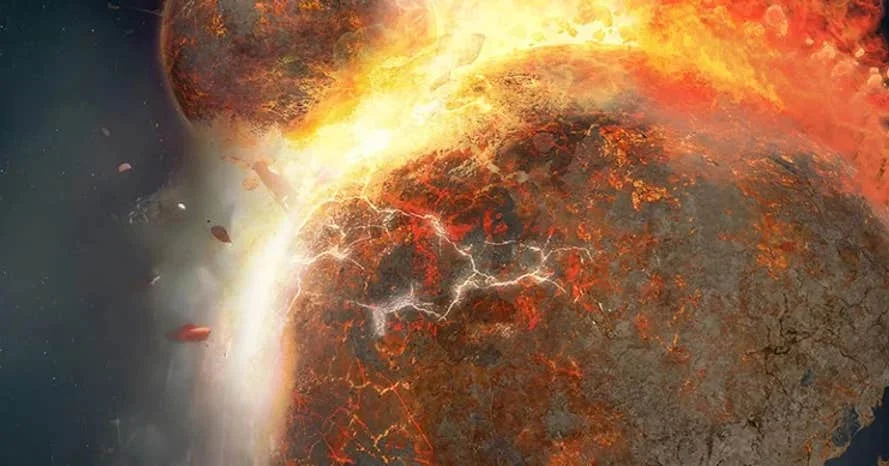
Lost Planet Theia Found Deep Within Earth? Scientists Uncover Shocking Seismic Discovery!
Imagine finding remnants of a lost planet lurking deep within our own. That's the stunning implication of new research suggesting that two massive, enigmatic structures buried thousands of kilometers beneath the Earth's surface may, in fact, be pieces of Theia, a Mars-sized planet that collided with Earth billions of years ago, resulting in the formation of the Moon.
These structures, known as Large Low-Velocity Provinces (LLVPs), have long been a puzzle for geophysicists. Located near the Earth's core-mantle boundary, beneath Africa and the Pacific Ocean, they are characterized by their density and their ability to slow down seismic waves. Now, scientists are proposing a radical new theory: these 'blobs' are not just geological anomalies, but fragments of another world.
According to a study published in Nature, researchers at Caltech propose that the LLVPs are composed of iron-rich fragments from Theia's mantle. "It's a radical idea," said one scientist, "but it fits the data surprisingly well."
The prevailing theory suggests that around 4.5 billion years ago, a cataclysmic collision occurred between Earth and Theia. This event is widely accepted as the genesis of our Moon. While the fate of the debris that formed the Moon is well-understood, what happened to the rest of Theia's material has remained a mystery – until now.
Qian Yuan, a geophysicist at Caltech, was inspired by a 2019 lecture on the giant-impact hypothesis. He wondered if the mysterious LLVPs could be Theia's remains, leading him to assemble a multidisciplinary team to investigate. Using simulations, they demonstrated that large portions of Theia's mantle could have merged with Earth's, eventually settling into stable, dense regions in the lower mantle.
These models demonstrated that the lower mantle, being cooler and more insulated, likely absorbed the shock differently, allowing heavier, iron-rich fragments of Theia to coalesce without fully mixing. This explains why the LLVPs are localized and extra dense—between 2 and 3.5 percent denser than the surrounding mantle.
The implications of this discovery are profound. If the LLVPs truly are remnants of Theia, they could have played a significant role in shaping Earth's geodynamic behavior, potentially influencing plate tectonics, mantle convection, and even the Earth's magnetic field. Moreover, insights into the compositions of these structures provide clues on the formation process of other planetary bodies in the solar system. Paul Asimow, a co-author of the study, notes, This understanding could provide insights not only into Earth’s past but also into the formative processes of other planetary bodies.
This research doesn't just rewrite the story of Earth's origins; it invites us to reconsider the role of cosmic collisions in planetary evolution. Are the LLVPs silent witnesses to a cosmic past or active players in Earth's present dynamics?
What do you think of this groundbreaking theory? Share your thoughts and join the discussion in the comments below!